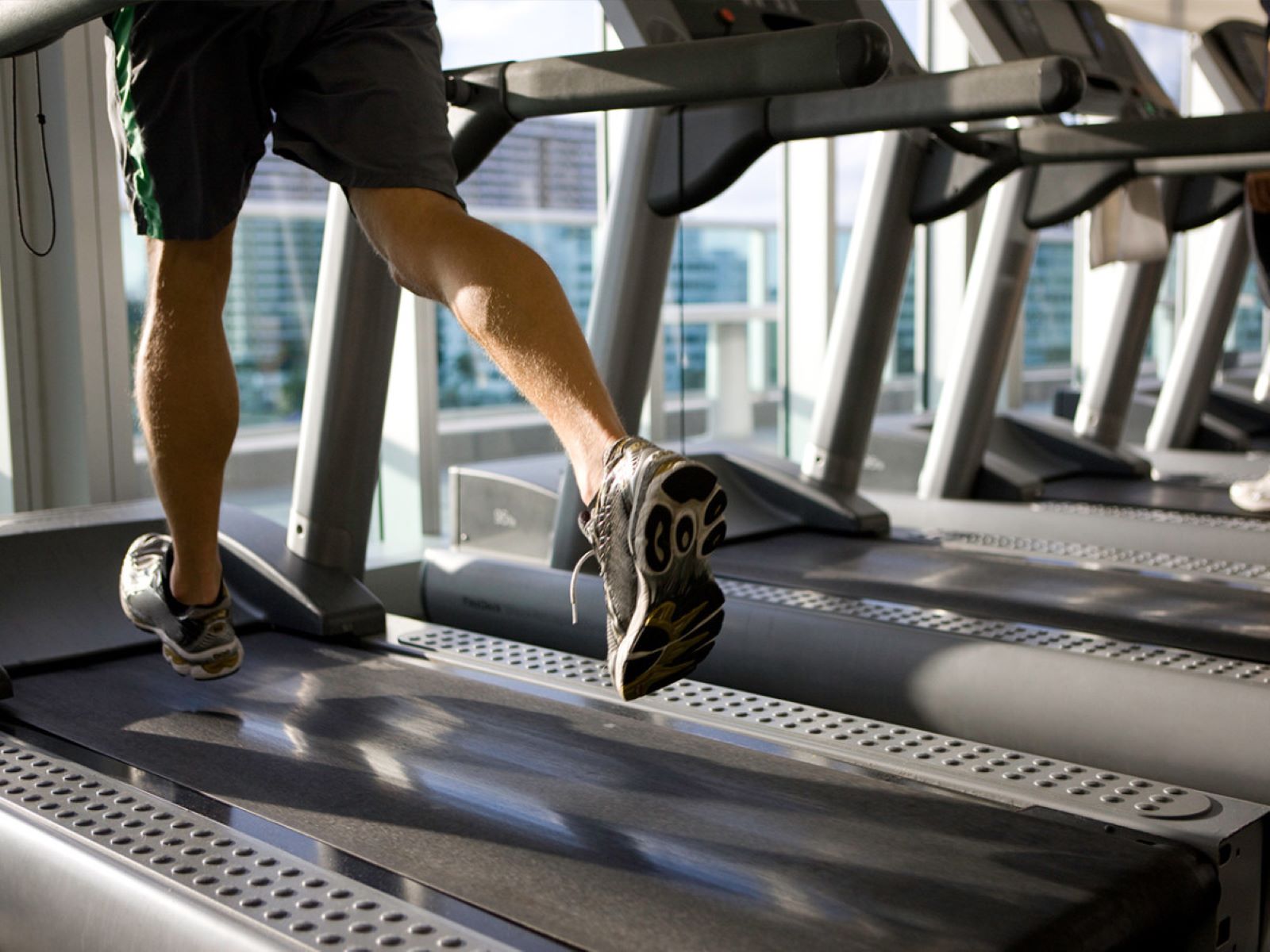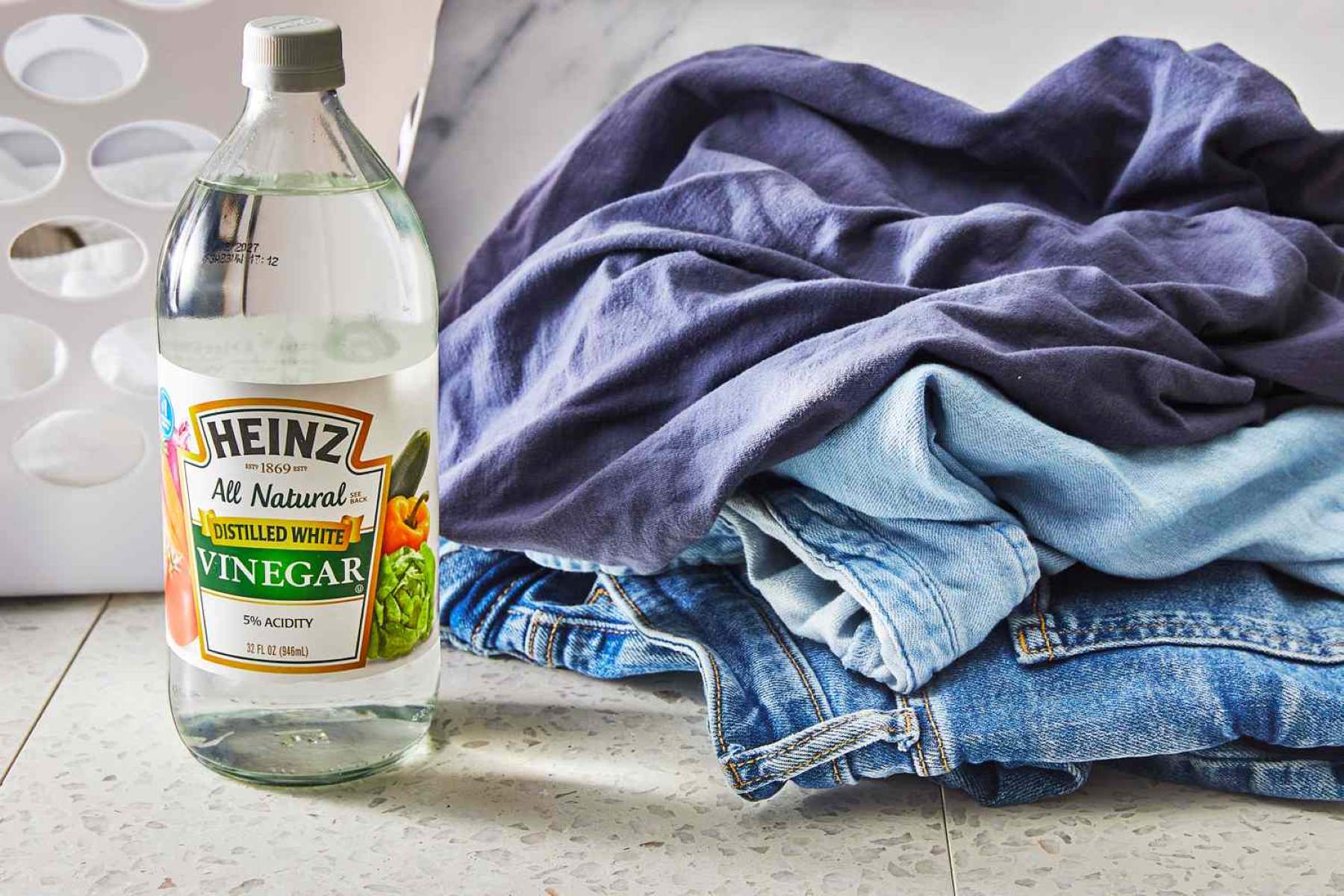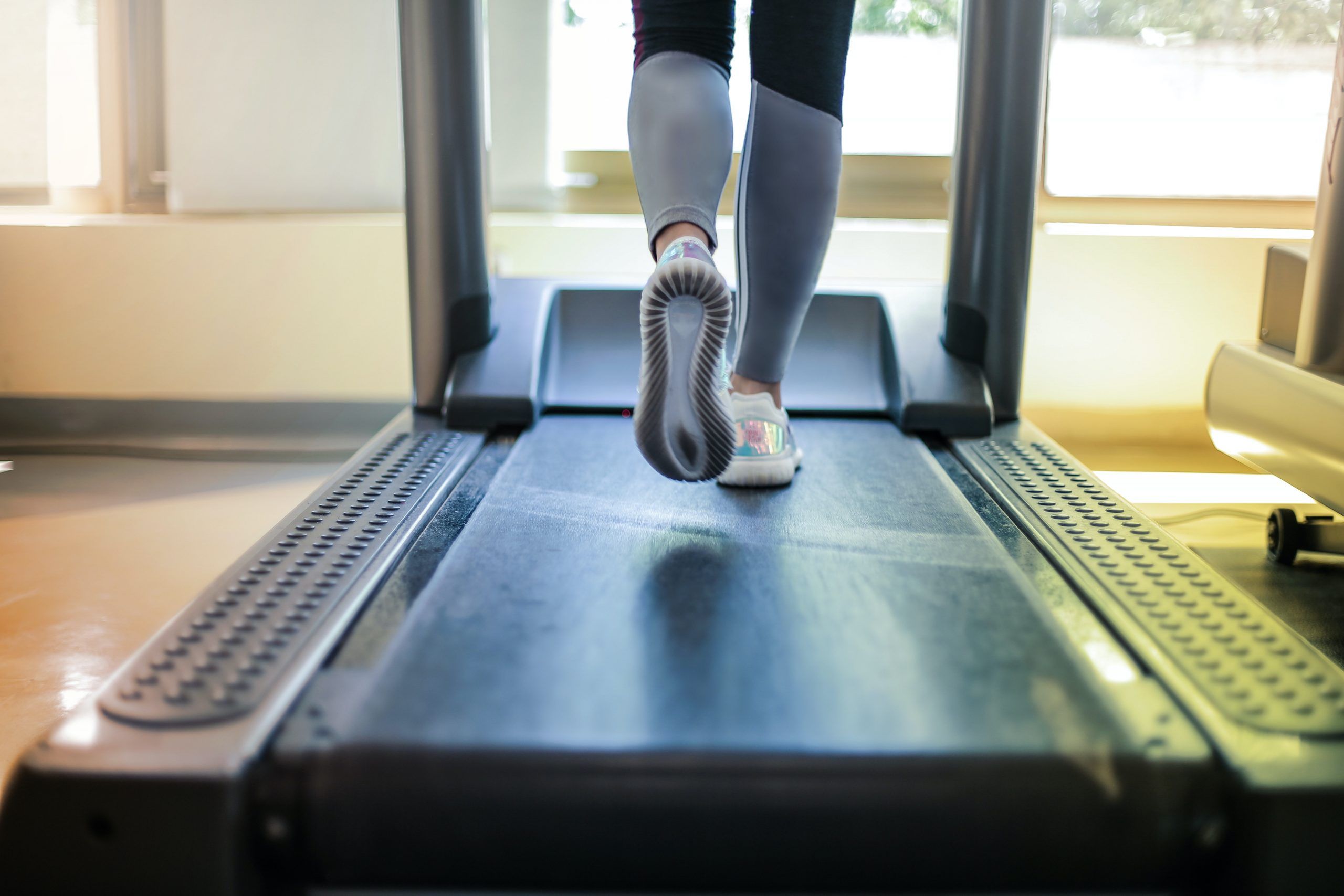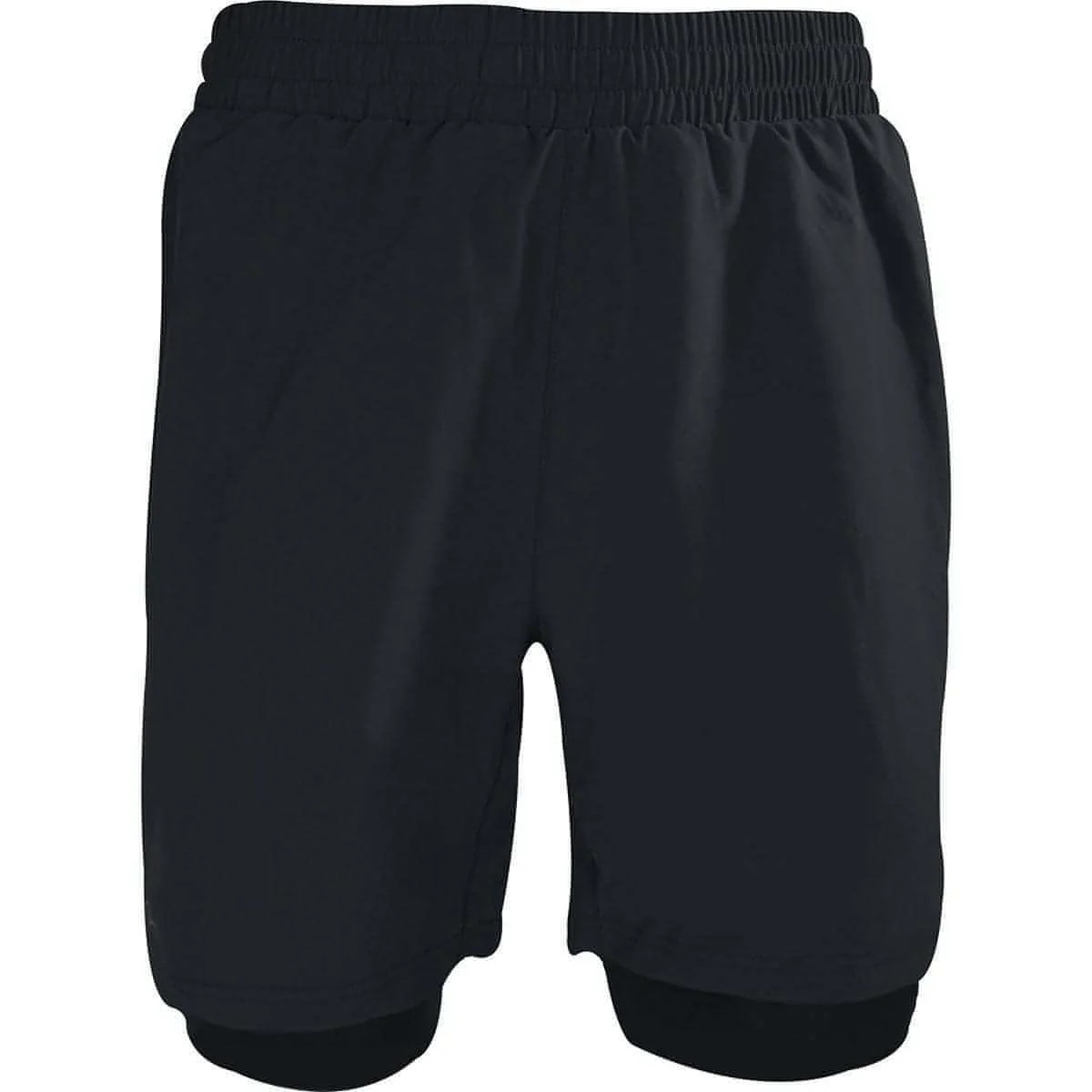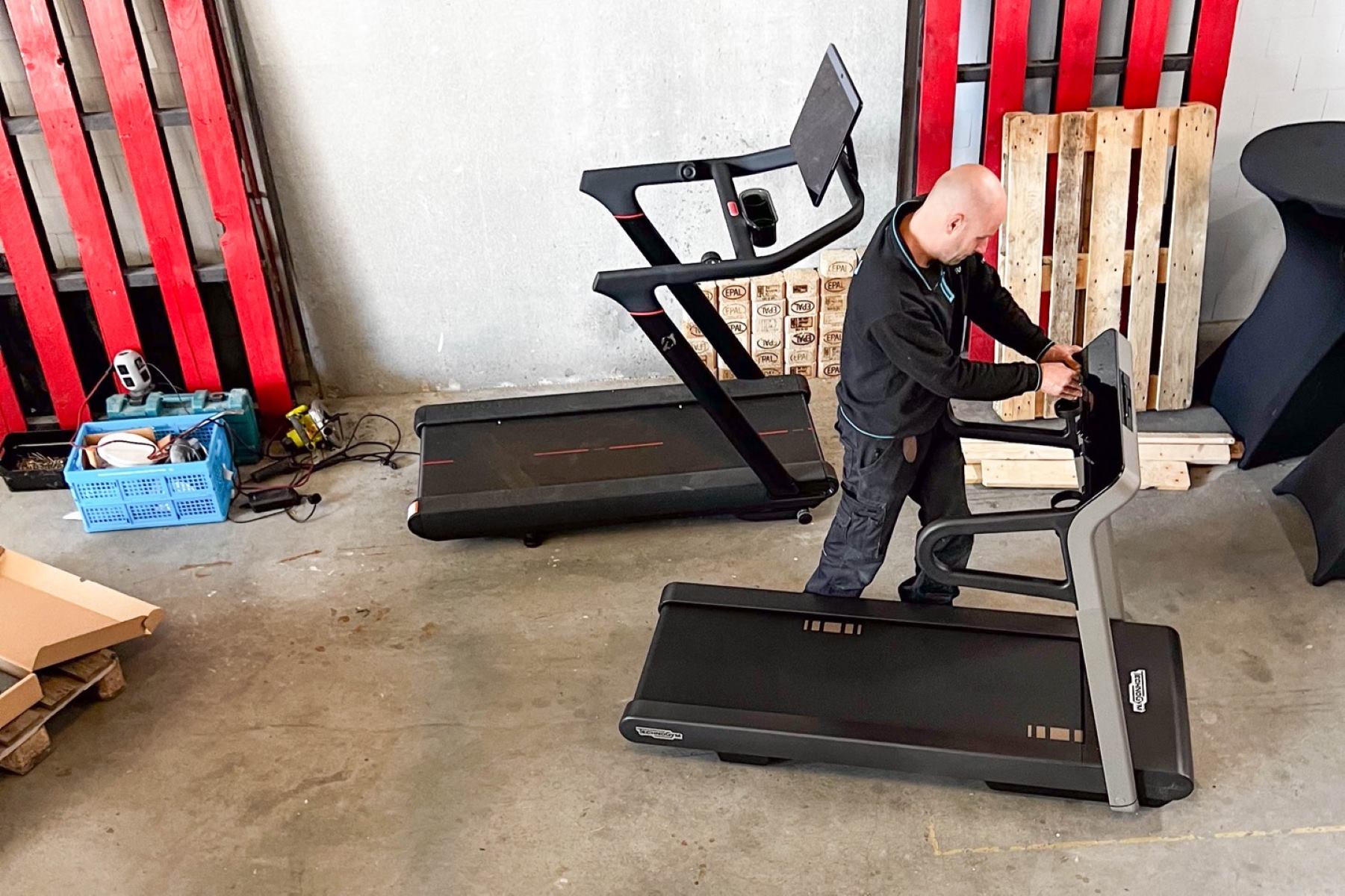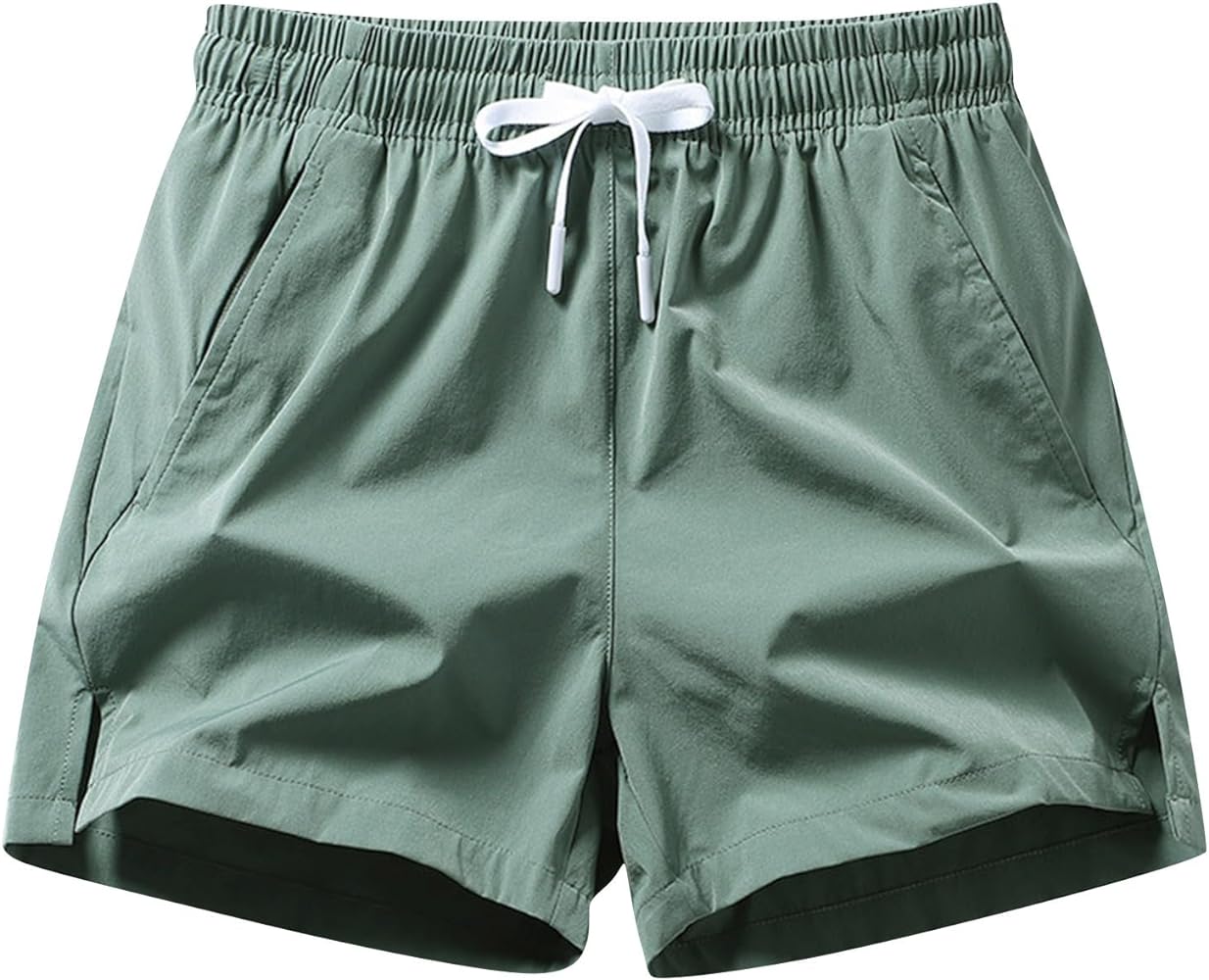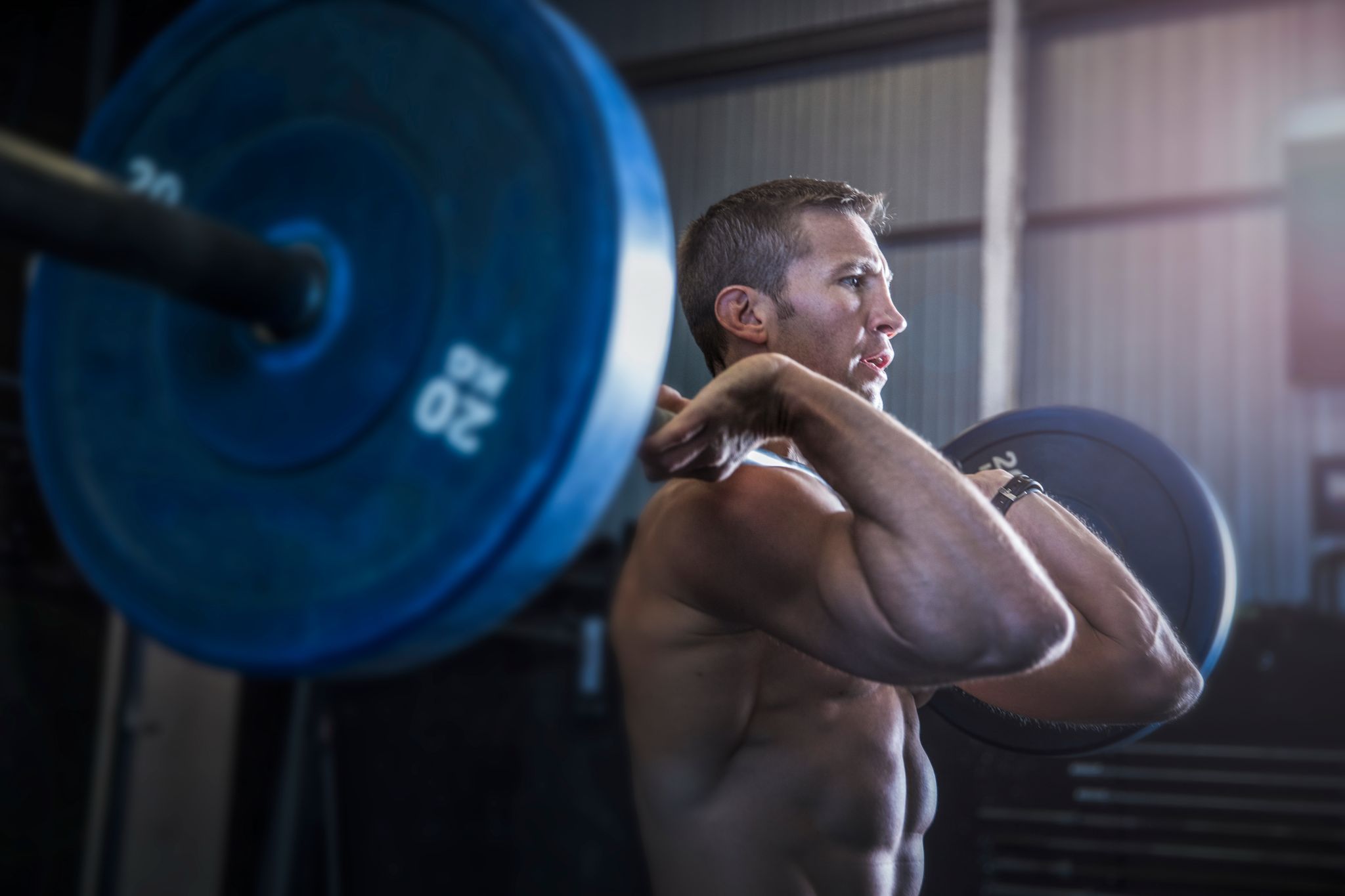

Featured
What Do Cleans Workout
Modified: January 2, 2024
Discover the incredible benefits of Featured Cleans workouts and how they can transform your fitness routine. Find out why these workouts are gaining popularity among fitness enthusiasts.
Introduction
When it comes to functional strength training exercises, the clean is a classic movement that delivers impressive results. Whether you’re a seasoned athlete or just starting your fitness journey, incorporating cleans into your workout routine can bring about significant improvements in strength, power, and overall body control.
But what exactly are cleans? In simple terms, it’s a compound exercise that involves lifting a barbell from the floor to the shoulders in one swift movement, combining elements of deadlifts, shrugs, and an explosive upright row. This dynamic movement engages multiple muscle groups simultaneously, making it an efficient way to build full-body strength and enhance athletic performance.
One of the key benefits of cleans is their ability to target a wide range of muscles in the body. By engaging the upper and lower body, as well as the core muscles, cleans provide a comprehensive workout that can help you develop functional strength, power, and explosiveness. From the quadriceps, hamstrings, and glutes, to the deltoids, traps, and forearms, cleans are a versatile exercise that can benefit athletes of all disciplines.
In this article, we will explore the various benefits of incorporating cleans into your workout routine, delve into the proper technique and form, discuss different variations of the exercise, highlight common mistakes to avoid, and provide important safety tips. By the end, you’ll have a solid understanding of how to effectively incorporate cleans into your fitness regimen and maximize your training results. So let’s dive in and discover the power of the clean!
Definition of Cleans
Cleans, also known as power cleans or barbell cleans, are a compound exercise commonly performed with a barbell. This exercise involves lifting the barbell from the floor to the shoulders in one fluid motion, combining strength, power, and explosiveness. The clean is popular among athletes, weightlifters, and fitness enthusiasts due to its ability to develop full-body strength and improve athletic performance.
During a clean, the lifter starts in a squat position with the barbell on the floor. The movement begins with a powerful extension of the hips, knees, and ankles, which propels the body upwards. As the lifter generates momentum, they continue to pull the barbell towards the body using a combination of an upright row and a shrug. The final phase of the clean involves quickly rotating the elbows underneath the barbell to catch it at the shoulders in a front rack position.
One of the defining characteristics of the clean is its emphasis on explosive power. Unlike traditional strength exercises such as squats or deadlifts, which primarily focus on slow and controlled movements, the clean requires a rapid acceleration of the barbell. This explosive element targets the fast-twitch muscle fibers, which are responsible for generating power and speed.
It’s important to note that cleans can be performed using various equipment, including barbells, dumbbells, or kettlebells. However, the barbell clean is the most common and widely recognized version. It offers the advantage of allowing lifters to handle heavier weights and load the musculature in a more efficient manner.
Now that we’ve defined what cleans are and how they are performed, let’s explore the specific muscles targeted by this exercise in the next section.
Muscles Targeted
Cleans are a compound exercise that engages multiple muscle groups across the body. This comprehensive movement targets both the upper and lower body, as well as the core muscles. By incorporating cleans into your workout routine, you can effectively develop strength, power, and muscular endurance in the following muscle groups:
- Quadriceps: The front of the thighs, including the rectus femoris, vastus lateralis, vastus medialis, and vastus intermedius, are heavily activated during the clean. These muscles work together to extend the knee and assist in the upward phase of the lift.
- Hamstrings: The posterior muscles of the thigh, including the biceps femoris, semitendinosus, and semimembranosus, play a vital role in stabilizing the knee joint and providing power during the hip extension phase of the clean.
- Glutes: The gluteus maximus, medius, and minimus are engaged in the clean to provide hip extension and stability. Strong glutes are key for generating power and explosiveness during the movement.
- Calves: The gastrocnemius and soleus muscles, located in the lower leg, are recruited to provide stability and contribute to the upward drive of the clean.
- Trapezius and Rhomboids: The upper back muscles, including the trapezius and rhomboids, are activated during the clean to assist in the pulling and shrugging phase of the lift. These muscles help to retract and stabilize the shoulder blades.
- Deltoids: The anterior, lateral, and posterior deltoids, commonly referred to as the shoulder muscles, are heavily involved in the catch phase of the clean. These muscles stabilize the shoulders as the lifter receives the barbell at the front rack position.
- Forearms and Grip: The clean places significant demand on the forearm muscles, including the flexors and extensors. Strengthening these muscles is essential for maintaining a secure grip on the barbell during the lift.
- Core Muscles: Cleans require stability and strength from the core muscles, including the rectus abdominis, obliques, transverse abdominis, and erector spinae. These muscles help maintain proper posture, transfer force, and stabilize the spine throughout the exercise.
As you can see, cleans are a full-body exercise that targets a wide array of muscles. Incorporating clean variations into your training routine will contribute to overall strength and muscular development, improve athleticism, and enhance functional performance in various sports and activities.
Benefits of Cleans
Cleans offer a myriad of benefits that make them a valuable addition to any fitness routine. Whether you’re an athlete looking to improve performance or someone seeking to enhance overall strength and conditioning, incorporating cleans can yield impressive results. Here are several key benefits of incorporating cleans into your workout regimen:
- Increased Strength: Cleans are a compound exercise that engages multiple muscle groups simultaneously, leading to significant strength gains. The explosive nature of the movement requires the activation of fast-twitch muscle fibers, promoting both muscular and neurological adaptations, ultimately leading to increased strength levels.
- Power Development: By focusing on explosive power, cleans improve the ability to generate force rapidly, translating into enhanced speed and power in athletic movements. This can be particularly beneficial for sports such as sprinting, jumping, and throwing, where explosive power plays a crucial role.
- Improved Athletic Performance: Cleans target the muscles and movement patterns commonly used in various sports, making them an effective exercise for improving athletic performance. The ability to generate explosive power, improve coordination, and enhance functional strength can significantly enhance performance in activities such as basketball, soccer, football, and track and field.
- Efficiency and Time-Saving: As a compound exercise, cleans allow you to work multiple muscle groups simultaneously in a single movement. This makes them a highly efficient exercise choice for those with limited time to spend at the gym.
- Enhanced Muscular Endurance: Cleans require both strength and stamina, challenging the cardiovascular system and muscular endurance simultaneously. Regularly performing cleans can improve your ability to maintain proper form and technique under fatigue, which can be beneficial in sports and endurance activities.
- Improved Posture and Core Stability: Proper technique and execution of cleans require a strong and stable core. The exercise engages the abdominal muscles, lower back, and muscles around the pelvic region, helping to improve posture and reduce the risk of injury.
- Burns Calories: Cleans are a dynamic and high-intensity exercise that can contribute to calorie expenditure and weight management. The combination of strength, power, and cardiovascular demands provides an effective calorie-burning workout.
- Increased Muscle Definition: Cleans target multiple muscle groups, which can lead to improved muscle definition and a more sculpted physique. This exercise primarily focuses on the lower body, but it also engages the upper body, resulting in a well-rounded muscular development.
Overall, the benefits of incorporating cleans into your workout routine are extensive. From increased strength and power to improved athletic performance and enhanced muscular endurance, this compound movement has the potential to elevate your fitness journey to new heights.
Proper Technique
Proper technique is crucial when performing cleans to ensure effectiveness and reduce the risk of injury. Here’s a step-by-step guide on how to execute cleans with proper form:
- Starting Position: Begin by standing with your feet shoulder-width apart and the barbell positioned on the floor in front of you. Grip the barbell with an overhand grip, hands slightly wider than shoulder-width apart.
- Set-Up: Lower your hips into a squat position, keeping your chest up, back straight, and core engaged. Your shins should be close to or touching the barbell, and your weight should be evenly distributed throughout your feet.
- First Pull: Initiate the movement by driving through your heels and extending your hips, knees, and ankles simultaneously. Keep your back flat and maintain a neutral spine as you lift the barbell off the floor with a controlled, explosive motion.
- Triple Extension: Once the barbell passes your knees, forcefully extend your hips, knees, and ankles, propelling the barbell upwards. Imagine pushing through the floor with your feet and generating maximum power and speed.
- Second Pull: As the barbell rises, continue pulling it towards your body by shrugging your shoulders and pulling your elbows upwards and outwards. Keep the barbell close to your body throughout this phase.
- Catch: As the barbell reaches its peak height, quickly drop underneath it by squatting and rotating your elbows forward. Catch the barbell at the shoulders, with your elbows pointing forward and your hands gripping the bar in a front rack position.
- Stand Up: Once you’ve caught the barbell, stand up by extending your hips and knees. Maintain a stable torso and engage your core to support the weight of the barbell.
- Lowering the Bar: To finish the movement, lower the barbell back down to the starting position by reversing the steps in a controlled manner, ensuring proper form and technique throughout the descent.
It is vital to remember that mastering the proper technique with lighter weights before progressing to heavier loads is crucial for safety and effectiveness. Working with a qualified coach or trainer can provide valuable guidance and feedback to ensure you’re performing cleans with correct form.
Additionally, maintaining a focus on breathing, staying mentally engaged, and using proper warm-up strategies are essential components of safe and effective clean technique.
Now that we’ve covered the proper technique for performing cleans, let’s explore some popular variations of this exercise in the next section.
Variations of Cleans
While the traditional barbell clean is the most common variation, there are several other options available to suit different fitness levels and preferences. Here are a few popular variations of the clean:
- Dumbbell Clean: Instead of using a barbell, this variation utilizes two dumbbells. The movement remains similar to the barbell clean, but the use of dumbbells allows for greater individual arm development and flexibility in hand positioning.
- Kettlebell Clean: Similar to the dumbbell clean, this variation involves using kettlebells instead of a barbell. Kettlebells provide a different grip and challenge the grip strength and stability further.
- Hang Clean: In this variation, the starting position is elevated, typically just above the knees. The lifter will perform the clean from this hang position, which places more emphasis on explosive hip extension.
- Power Clean: While the power clean is similar to the traditional clean, it involves catching the barbell higher, typically at the mid-thigh level. This variation focuses on developing power and explosiveness, as the lifter must generate maximum force to propel the barbell to a higher catch position.
- Split Clean: In the split clean, the lifter performs a split jerk or split squat after catching the barbell at the front rack position. This variation allows for a deeper squat and adds an additional challenge to stability and coordination.
- Hang Power Clean: Similar to the hang clean, the hang power clean starts with the barbell at an elevated position above the knees. However, the lifter performs the movement with the objective of catching the barbell at the shoulders without dipping into a full squat.
- Single-Arm Clean: This variation involves performing the clean with one arm, whether using a dumbbell or kettlebell. This variation challenges stability and engages the core and supporting muscles on one side of the body.
It’s important to note that the variations mentioned above are just a few examples, and there are countless other ways to modify the clean to fit your individual needs and goals. Experimenting with different variations can help keep your workouts engaging and target specific muscle groups or movement patterns.
Remember, regardless of the variation you choose, focus on maintaining proper form, gradually increase the weight, and ensure safety at all times. Consulting with a qualified fitness professional can help you select the most suitable variations based on your fitness level and goals.
In the next section, we will discuss common mistakes to avoid when performing cleans, as it’s important to be aware of potential pitfalls in order to maximize the benefits of this exercise.
Common Mistakes to Avoid
Performing cleans with proper form is essential to maximize their benefits and minimize the risk of injury. Here are some common mistakes to avoid when performing cleans:
- Rounded Back: One of the most common mistakes is rounding the back during the movement. This can lead to unnecessary stress on the spine and increase the risk of injury. Maintain a neutral spine throughout the entire range of motion, keeping your chest up and core engaged.
- Using Too Much Weight: It’s important to start with an appropriate weight that allows you to maintain proper form. Using too much weight can compromise technique and increase the risk of injury. Gradually increase the weight as your form and strength improve.
- Insufficient Warm-Up: Failing to properly warm up before performing cleans can increase the risk of strains or pulls. Prioritize a dynamic warm-up routine that includes mobility exercises for the hips, shoulders, and wrists, as well as light to moderate cardiovascular activity to increase blood flow and body temperature.
- Inconsistent Elbow Positioning: During the catch phase, it’s crucial to maintain proper elbow positioning. If the elbows are dropped or rotated too far forward, it can cause unnecessary stress on the wrists and shoulders. Keep the elbows high and in line with the shoulders to ensure a stable and secure catch.
- Improper Hip Extension: The power generated from hip extension is crucial for the clean. Failing to fully extend the hips during the triple extension phase can limit the amount of force generated and diminish the effectiveness of the exercise. Focus on driving through the hips explosively to achieve maximum power.
- Misplacing the Feet: Proper foot placement is essential for maintaining balance and stability during cleans. Avoid excessively wide or narrow stance widths, as this can affect your ability to generate power and maintain proper form. Find a comfortable stance width that allows you to execute the movement with stability and control.
- Losing Control of the Bar: Maintaining control of the barbell throughout the movement is crucial for safety and effectiveness. Avoid excessive swinging or momentum that can lead to losing control of the bar. Maintain a strong grip and focus on a smooth, controlled trajectory during both the ascent and descent.
- Neglecting the Lower Body: Cleans are a full-body exercise, but it’s easy to focus solely on the upper body while performing the movement. Neglecting the engagement of the lower body, particularly the legs and glutes, can limit the power and effectiveness of the clean. Ensure that you’re driving through the lower body and utilizing the leg muscles to generate power.
Avoiding these common mistakes will help you perform cleans with proper technique and maximize the benefits of this exercise. If you’re new to cleans or unsure about your form, consider working with a qualified coach or trainer who can provide guidance and feedback.
Now that we’ve discussed the common mistakes to avoid, let’s move on to the next section, which focuses on important cautions and safety tips for performing cleans.
Cautions and Safety Tips
While cleans can be an effective and rewarding exercise, it’s important to prioritize safety and take certain precautions. Here are some cautions and safety tips to keep in mind when performing cleans:
- Consult with a Professional: If you’re new to cleans or have any underlying health conditions or injuries, it is advisable to consult with a qualified fitness professional or coach who can ensure that you’re performing cleans correctly and safely.
- Progress Gradually: Like any exercise, it’s crucial to progress gradually when performing cleans. Start with lighter weights and gradually increase the load as your strength and technique improve. Rushing into heavy weights before mastering proper form can increase the risk of injury.
- Focus on Technique: Prioritize proper technique over the amount of weight you lift. Mastering the correct form and maintaining it throughout each repetition is crucial for safety and effectiveness. Do not sacrifice your form for heavier weights.
- Warm-Up Properly: Always warm up adequately before performing cleans. This helps prepare your muscles, joints, and cardiovascular system for the demands of the exercise. Incorporate dynamic stretches, mobility exercises, and light cardiovascular activities to increase blood flow and body temperature.
- Use Proper Equipment: Ensure that you are using the appropriate equipment, such as a sturdy barbell with collars, bumper plates, and a suitable lifting platform or cleared space. Using worn-out or damaged equipment increases the risk of accidents and injuries.
- Listen to Your Body: Pay attention to your body and any pain or discomfort during cleans. If you experience sharp or persistent pain, or if something feels off, stop the exercise and seek medical advice. Pushing through pain can lead to further injury.
- Progressively Increase Volume and Intensity: Gradually increase the frequency, volume, and intensity of your cleans to allow your body to adapt. Avoid overtraining or excessive repetition, which can increase the risk of overuse injuries or burnout.
- Maintain a Safe Environment: Create a safe exercise environment by ensuring there’s adequate space, proper lighting, and a non-slip surface. Clear any obstacles or hazards from the workout area to minimize the risk of tripping or injuries.
- Stay Hydrated and Rest: Drink plenty of water before, during, and after your workouts to stay hydrated. Take rest days to allow your body to recover and prevent overtraining.
By following these cautions and safety tips, you can minimize the risk of injuries and ensure a safe and effective clean workout. Remember, your safety and well-being should always be prioritized during any exercise routine.
In the final section, we will wrap up this article by summarizing the key points discussed and emphasizing the importance of incorporating cleans into your fitness regimen.
Conclusion
Cleans are a powerful exercise that offer a wide range of benefits for individuals of all fitness levels. By incorporating cleans into your workout routine, you can develop strength, power, and muscular endurance, improve athletic performance, and enhance overall body control. The dynamic nature of the movement engages multiple muscle groups simultaneously, making it an efficient and effective exercise choice.
When performing cleans, it’s important to prioritize proper technique and form to maximize the benefits and prevent injuries. Avoid common mistakes such as rounding the back, using excessive weight, or neglecting proper warm-up. Progress gradually, listen to your body, and always prioritize safety.
Don’t be afraid to explore different variations of the clean, such as the dumbbell clean, kettlebell clean, or power clean, to keep your workouts challenging and engaging. Remember, there are various options available to suit different fitness goals and preferences.
Lastly, always prioritize safety by consulting with a qualified fitness professional, using proper equipment, and creating a safe exercise environment. Listen to your body, warm up adequately, and progressively increase the volume and intensity of your cleans.
Incorporating cleans into your fitness regimen can be a game-changer. Whether you’re an athlete looking to enhance performance or someone seeking overall strength and conditioning, this compound exercise can help you achieve your goals. So, start incorporating cleans into your workouts and reap the numerous benefits they have to offer.


